 We each offer a product or a service daily. Often the product we offer is our capacity to be a better spouse, parent, employer or employee. “A Feast Fit for a King” is particularly relevant for people in sales though each of us “sells” constantly in some way, shape or form.
We each offer a product or a service daily. Often the product we offer is our capacity to be a better spouse, parent, employer or employee. “A Feast Fit for a King” is particularly relevant for people in sales though each of us “sells” constantly in some way, shape or form.
When is the best time to ask someone to make a decision about our offer?
The most obvious answer is when the recipient has all the information and is predisposed to accept our suggestions.
Suppose we are preparing a Feast Fit for a King for someone special. We go to the supermarket, buy the ingredients for the meal, a nice bottle of wine and candles to create the perfect atmosphere.
While we prepare the meal, we think of all the details. The precise moment to put each course into the oven, the table setting and the music we want to hear. When everything is ready, we sit down at the table with our loved one to enjoy a Feast Fit for a King.
When is the best time to enjoy each succulent bite?
It is in that instant, of course!
Something similar happens when we talk to a client. We diligently do the following:
Contact the person
Qualify their capacity to buy
Investigate necessities and desires
Present our offering in terms of benefits
Respond to concerns with confidence and conviction
After we have expertly followed each step, we can ask for a decision without fear and without fumbling. While the words are not nearly as important as the intent, we can say, for example, “Let’s get things going; I just need your approval.”
Amazing as it may seem, studies have shown the majority of sales calls end without the salesperson ever asking for the order! At the end of the presentation, the salesperson typically mumbles something like, “What do you think?” to which the person eloquently replies, “Let me think about it, and I’ll call you…”
We know from experience, the promise of “I’ll call you…” is typically an empty promise designed to get rid of salespeople.
What can we do?
 Just as the best time to eat a Feast Fit for a King is in this instant, the best time to highlight the benefits of our offer and to ask someone to make a decision is at the same time we have given them all the information they need.
Just as the best time to eat a Feast Fit for a King is in this instant, the best time to highlight the benefits of our offer and to ask someone to make a decision is at the same time we have given them all the information they need.
If we put our Feast Fit for a King in the refrigerator and take it out the next day, it may still taste great, although it may never be as good as the moment it was first prepared. Similarly, a person is most likely to make a favorable decision immediately after we have “served” our proposal.
Rather than packing our bags and heading for the nearest exit in defeat, we should do everything possible to urge people to make a decision now and not later. Often, the worst thing we can do is to do nothing at all.
While there are no magic words or secret formulas to achieve our objectives 100% of the time, we can enter into every situation prepared to give our very best with confidence we will achieve our purpose. When we take action and ask people to make a decision, we determine our direction and drive our destiny.
In April, 2005 Lunar Letter, we conducted a survey regarding the following question:
“How do you overcome Fears, Uncertainties and Doubts to be more productive?”
The most frequent response from our readers was to, “Take Action!”
Take action today to empower excellence tomorrow.
@RobMcBride
May 2005


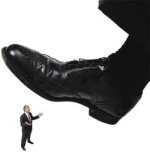 Our lives are a collection of emotions and events which mold us with power and satisfaction or with weakness and discontent. In his book Thinkertoys, Michael Michalko mentions three elements which kill creative energy and control many of our thoughts and actions.
Our lives are a collection of emotions and events which mold us with power and satisfaction or with weakness and discontent. In his book Thinkertoys, Michael Michalko mentions three elements which kill creative energy and control many of our thoughts and actions.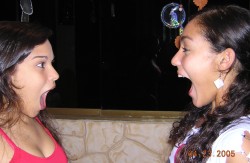

 FUDs are frequently the cause of our most trying times. I suggest we Fire the FUDs! Just get rid of them. When Fear, Uncertainty or Doubts enter our mind, we must have the power to replace them with Conviction, Certainty and Confidence.
FUDs are frequently the cause of our most trying times. I suggest we Fire the FUDs! Just get rid of them. When Fear, Uncertainty or Doubts enter our mind, we must have the power to replace them with Conviction, Certainty and Confidence.

 Companies, like people, must Bounce back from challenging situations if they want to remain in business. It is imperative to rise and roar after falling or failing in order to soar with the eagles.
Companies, like people, must Bounce back from challenging situations if they want to remain in business. It is imperative to rise and roar after falling or failing in order to soar with the eagles.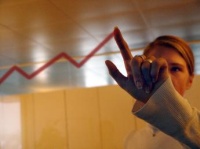

 Our ability to “Bounce Back” and move forward is an attribute which provides confidence and security to face life’s most challenging situations. The analogy of a bouncing ball rebounding in spite of adversity is a powerful metaphor as is the resiliency of a sponge. While the physical characteristics of a bouncing ball and a sponge are very different, there are noteworthy similarities.
Our ability to “Bounce Back” and move forward is an attribute which provides confidence and security to face life’s most challenging situations. The analogy of a bouncing ball rebounding in spite of adversity is a powerful metaphor as is the resiliency of a sponge. While the physical characteristics of a bouncing ball and a sponge are very different, there are noteworthy similarities.
 A positive attitude, focus, flexibility, organization and initiative are characteristics which allow us to have the resilience of a sponge to Bounce Back from any situation which arises.
A positive attitude, focus, flexibility, organization and initiative are characteristics which allow us to have the resilience of a sponge to Bounce Back from any situation which arises.
 Our habits and routines are part of our being. Despite experience to the contrary, we can be masters of our routines. Implementing a system which highlights the importance of applying positive habits, creates a lifestyle which unlocks a wide range of opportunities. Instead of thinking, “Why can’t we do it?” we can ask, “How can we do it?” Since we have unconsciously established daily routines, our challenge is to implement new ones.
Our habits and routines are part of our being. Despite experience to the contrary, we can be masters of our routines. Implementing a system which highlights the importance of applying positive habits, creates a lifestyle which unlocks a wide range of opportunities. Instead of thinking, “Why can’t we do it?” we can ask, “How can we do it?” Since we have unconsciously established daily routines, our challenge is to implement new ones. establishes a mechanism to initiate change, reinforce positive behavior and track progress. While the number “8” flows with the ideas and principles set forth, the following are also valid:
establishes a mechanism to initiate change, reinforce positive behavior and track progress. While the number “8” flows with the ideas and principles set forth, the following are also valid: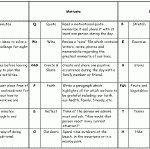
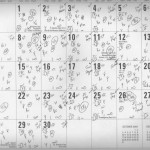
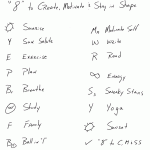
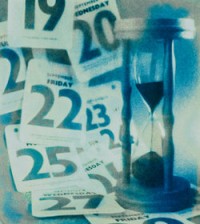 chastise ourselves for coming up short, rather to possess a powerful plan which guides us to our objectives.
chastise ourselves for coming up short, rather to possess a powerful plan which guides us to our objectives. The most important thing in life is not the daily ups and downs we experience, but rather our reaction to those events. Our capacity to Bounce back from challenging situations determines our direction and destiny.
The most important thing in life is not the daily ups and downs we experience, but rather our reaction to those events. Our capacity to Bounce back from challenging situations determines our direction and destiny.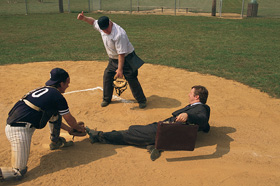 rejection or failure. At first glance, it appears the meanings of the word Bounce are incongruent. When we take a closer look we actually see they are very much in harmony.
rejection or failure. At first glance, it appears the meanings of the word Bounce are incongruent. When we take a closer look we actually see they are very much in harmony. Being congruent and in harmony with our emotions is perhaps one of the most difficult things we can do. We are taught from a very young age that it isn’t always wise or desirable to show what we feel. Instead we often repress feelings which elicit extreme emotions in the positive and the negative.
Being congruent and in harmony with our emotions is perhaps one of the most difficult things we can do. We are taught from a very young age that it isn’t always wise or desirable to show what we feel. Instead we often repress feelings which elicit extreme emotions in the positive and the negative. Energy is life and we communicate with the world according to our level of energy. Internal energy is a direct reflection of our physical and emotional well-being. When we are physically and emotionally energized, we direct our destiny. When we are physically and emotionally weak, we drift aimlessly in an ocean of change.
Energy is life and we communicate with the world according to our level of energy. Internal energy is a direct reflection of our physical and emotional well-being. When we are physically and emotionally energized, we direct our destiny. When we are physically and emotionally weak, we drift aimlessly in an ocean of change.
 Physical exercise is initially exhausting and ultimately satisfactory. Laziness is initially satisfactory and ultimately unproductive. While it is imperative to recharge our bodies to create energy, the best way to achieve this goal is by restful sleep and not lethargy. Strenuous physical endeavor activates our body and creates energy. By using every opportunity during the day to exercise our bodies, we generate and store energy for future use.
Physical exercise is initially exhausting and ultimately satisfactory. Laziness is initially satisfactory and ultimately unproductive. While it is imperative to recharge our bodies to create energy, the best way to achieve this goal is by restful sleep and not lethargy. Strenuous physical endeavor activates our body and creates energy. By using every opportunity during the day to exercise our bodies, we generate and store energy for future use.